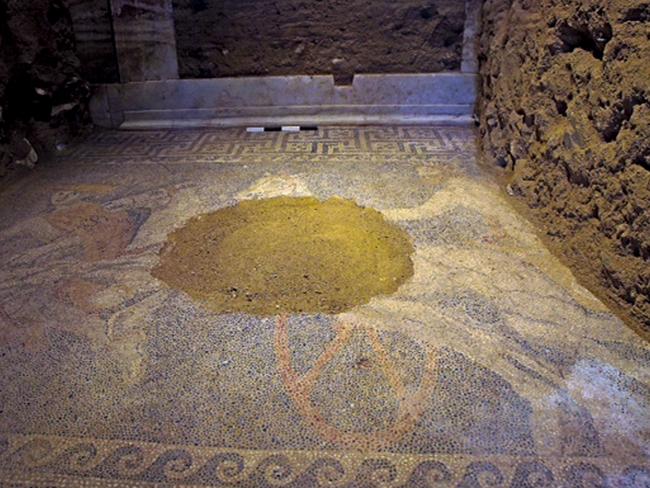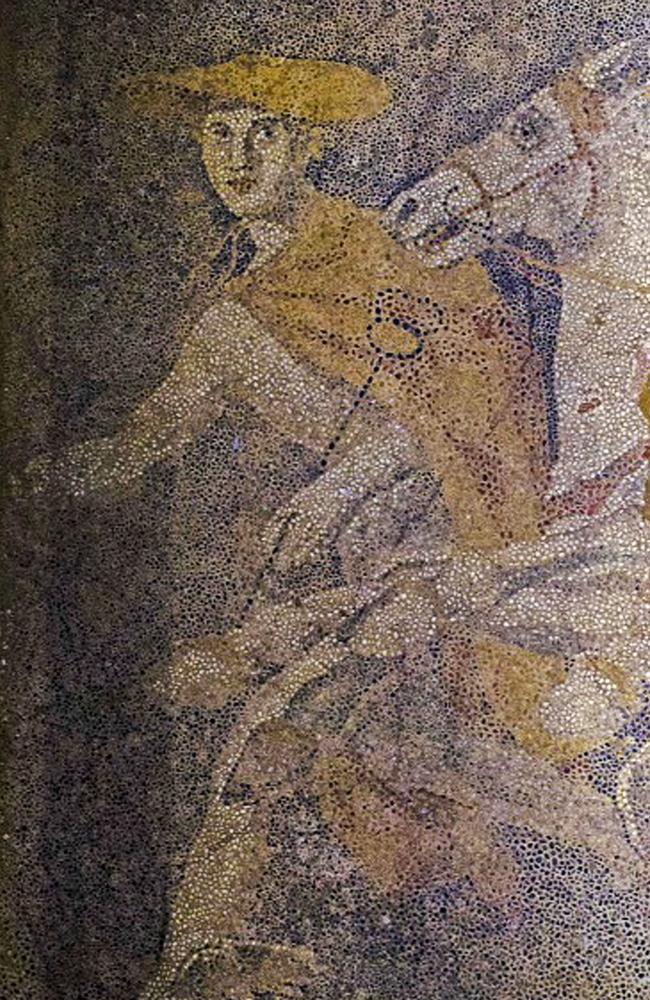Remains of Alexander the Great’s father King Philip II found in northern Greece
ANCIENT bones found in a royal tomb in northern Greece belong to Alexander the Great’s father King Philip II, a team of Greek researchers have confirmed.
ANCIENT bones found in a royal tomb in northern Greece belong to the Macedonian King Philip II, Alexander the Great’s father, a team of Greek researchers have confirmed.
Discovery News reports the anthropological investigation at Vergina, a town 160 kilometres away from Amphipolis’s mysterious burial mound, examined 350 bones and fragments found in two caskets of the tomb.
Along with the cremated remains of Philip II, the tomb also contained the bones of a woman warrior, possibly the daughter of the Skythian King Athea, Theodore Antikas, head of the Art-Anthropological research team of the Vergina excavation, told Discovery News.
UNDERWATER WONDER: Antikythera wreck in southern Greece yields new treasures
The findings will be announced on Friday at the Archaeological Museum of Thessaloniki.
King Philip II was a powerful fourth-century B.C. military ruler from the Greek kingdom of Macedon, who gained control of Greece and the Balkan Peninsula through tactful use of warfare, diplomacy, and marriage alliances.
Meanwhile, archaeologists digging through another vast ancient tomb in nearby Amphipolis have uncovered a giant floor mosaic that covers the whole area of a room seen as the antechamber to the main burial ground.

The mosaic, 3 metres long and 4.5 metres wide, depicts a horseman with a laurel wreath driving a chariot drawn by two horses and preceded by the god Hermes.
According to a Culture Ministry announcement on Sunday, Hermes is depicted as the conductor of souls to the afterlife.
The mosaic is made up of pebbles in many colours: white, black, grey, blue, red and yellow.
A circular part, near the centre of the mosaic, is missing, but authorities say enough fragments have been found to reconstruct a large part.

The ministry says that archaeologists have dated the mosaic to the last quarter of 4th century B.C. (325-300 B.C.), consistent with their belief the grave contains the remains of a contemporary of Alexander the Great.
Alexander was the ancient Greek King of Macedonia, who conquered the Persian Empire and reached present-day India, Afghanistan and Uzbekistan in a whirlwind campaign, from 334 to 323 B.C.
The grave may be that of a relative or general of Alexander’s, archaeologists have speculated.
“The tomb is definitely dated to the period following the death of Alexander the Great [in 323BC], but we cannot say who it belonged to,” supervising archaeologist Katerina Peristeri said.
Alexander himself, who died in Babylon in present-day Iraq at age 32, in 323 B.C., is believed to have been buried in Egypt.
But his tomb hasn’t been found.



